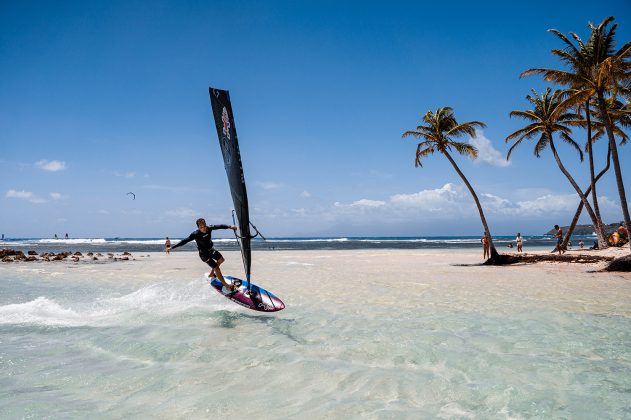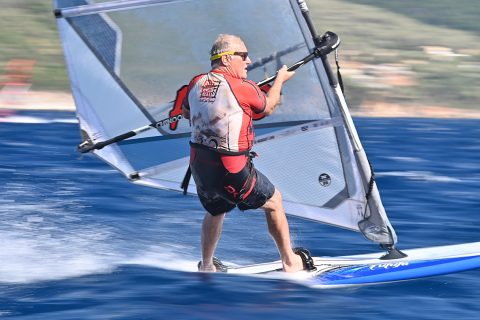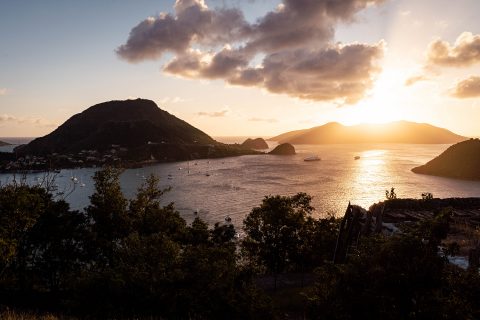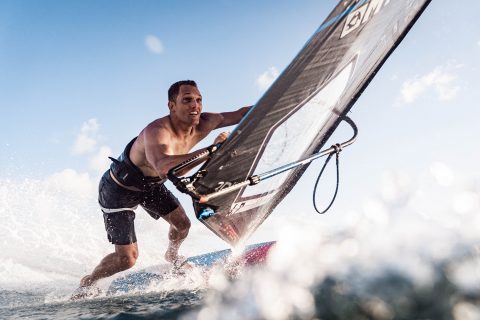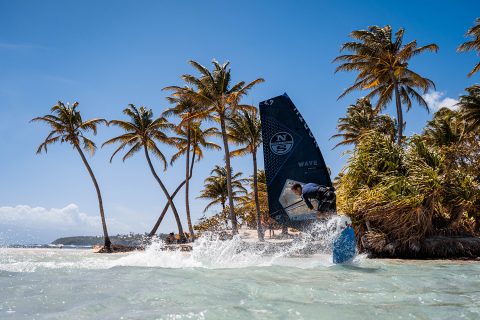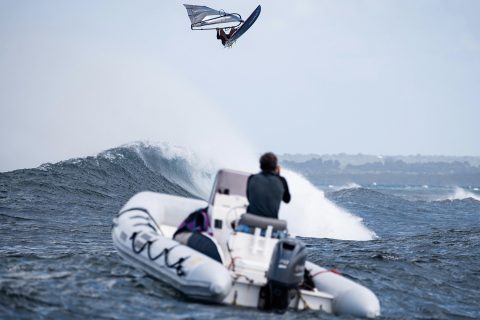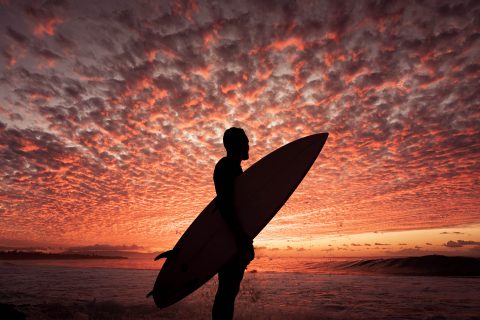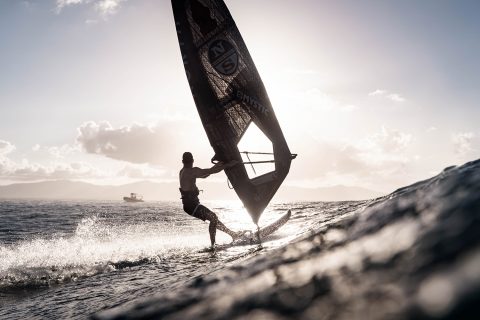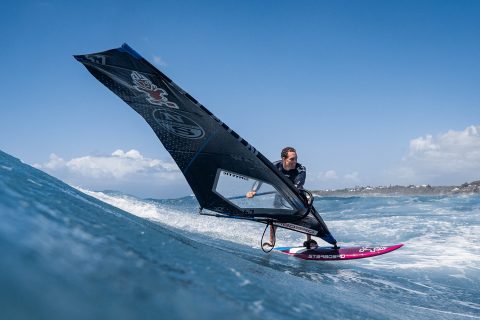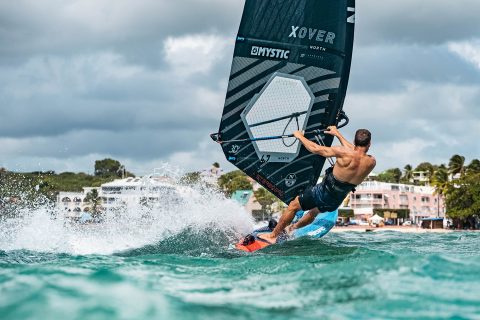GUADELOUPE: FRANCE’S BEST KEPT SECRET!
Paddy Payne gives a British view on what he calls “France’s best kept secret” – Guadeloupe, while Antoine Martin provides local knowledge on his island home.
Photos- Photos- Mattéo Nativelle (Guadeloupe shots), PROtography Official (Paddy Payne shot).
Words – Paddy Payne, Antoine Martin
Paddy Payne – “Guadeloupe is an incandescently beautiful Caribbean Island, custom built for windsurfing, but why have only a few of us Brits ever been there? It’s a French territory and my theory is that they are trying to keep it all to themselves! In Guadeloupe they speak French, use Euros and drive on the wrong side of the road, it’s basically France with palm trees and more than enough reef breaks to keep even the greediest surfer happy, and with the crucial trade winds blowing day and night, you have a recipe for a tropical location that any self-respecting windy would want to keep quiet.
So buy me a ticket! And therein lies the problem – there are no direct flights from the UK, and no air or ferry links to nearby UK centric islands like Antigua, St Lucia or Barbados. Getting there is an absolute pain in the butt from the UK. For my wife and I, it involved taxi, train, taxi, Eurostar, train, tram and an overnight stay at Paris Orly airport. Being someone who lives within an hour of three international airports, it’s an extremely irritating and not to mention expensive trip to the departure lounge, however once you get there the flights are pretty good value at about 320 Euro return. So the big question is, is it worth it? You betcha!
- Paddy Payne
Geography
The Rivière Salée (salty river), divides the island of Guadeloupe in two: Basse-Terre (west side, mountainous with vast amounts of verdant rainforest) and Grande-Terre (east side and flatter). The two sides are shaped like a butterfly, and the wind blows across the flatter windward side up and over the mountains to the leeward side, and as it does it dumps (or at least did while we were there) an extraordinary amount of rain, so be warned! Fortunately for us windies, most of the best sailing spots are on the flatter, drier side, of Grande-Terre.
- Stunning scenery
On arrival, we picked up a hire car and headed for Sainte-Anne on the popular south-east side of Grande-Terre, and booked into a delightful multi-coloured cabin rented at a refreshing very modest price, which we found on Booking.com. We decided to go for a sunset walk to a nearby exquisite palm fringed beach, in front of a large lagoon which was protected by a reef that was kicking up a head high wave. A couple of windsurfers were ripping it apart, with down-the-line riding in cross-shore conditions; it looked like we had come to the right place! We came across a beach bar, where I ordered two beers, the barman smiled and refused payment for them when I offered my card; we had definitely come to the right place! I found out afterwards that the bar belonged to Club Med, and as all the people staying there were on an all-inclusive deal, the bar didn’t actually do the money thing at all; I can’t guarantee the same would work for you, but always worth a punt!
Club Med
As the sun slipped over the horizon, we necked our beers, and had a chat with the Club Med beach team who were packing away for the night. The windsurfing kit looked promising with a decent assortment of boards and sails, and the good news was, you didn’t need to be staying at Club Med to rent it; 50 Euros a session seemed a bit steep, but the location was amazing. I scoped out what I anticipated I’d be jumping on in the morning, and started thinking about supper.
- Cranking a bottom turn
The nearby restaurant offered fabulous fare, beautifully prepared lobster and some very quaffable wine, well it is a French island and the French tend to do the eating and drinking thing very well, don’t they, well most of the time anyway, and the price was not overly excessive to boot. Replete, we happily we retired to sleep off the jet lag.
Medical
That’s where the good time story pauses for a minute, during the night my wife was violently and consistently ill, and up every 5 minutes. In the morning she passed out, keeled over and headbutted the floor; we needed to see a doctor pronto. Fortunately the island is served by an excellent French medical system and we headed off along the coast to Saint-François to a Saturday clinic. Gastro problems were suspected and antibiotics prescribed. While we were there we spied another spot where windsurfers, wing foils and kites were screaming back and forth across the lagoon, and made a mental note to put it on our hit list.
- Freestyle session
We crawled back to Sainte-Anne, the traffic worse than Piccadilly in rush hour, and my wife took to her bed to try and catch up on a night’s lost sleep. When she was comfortable I grabbed my boardies and slipped out, heading along the beach to Club Med. In the bay there was a couple of sisters, who would have graced any front cover of Vogue, being taught to kitesurf by a pair of guys on jet skis, who were supplying essential tips via waterproof radios hidden in the girls’ helmets. I gotta say they were doing spectacularly well, I would have taken pictures, but they would probably have gotten me arrested!
Kit choice
At the centre I deliberated about what kit to take and plumped for a 110-litre with a 6.5m rig. I had a recollection from years ago of people only ever having to use one 6-metre sail in Barbados, so I figured similar conditions, same trade wind, just add an extra half metre for my additional poundage and the job would be a good ’un. How wrong I was! I wallowed around the lagoon like a hippo on tranquilisers, whilst the Vogue models sped past with the just the slightest shake of their beautiful heads.
Eventually I managed to get back to base, and headed for the sail and board racks, bigger and bigger! I gabbed the next size up – 120-litre/ 7.5m, that should do trick, and headed back out. But I was still just on the cusp of getting going. I don’t know what it is with wind in hot climates, but it always seems stronger than it actually is, and even with this bigger kit, it was close but no cigar! I headed back to the beach again, studiously trying not to make eye contact with the said two young ladies.
- Antoine goes big for the camera
Bigger
Back at the racks it was a case of bigger, bigger, biggest! I snapped an 8.5m onto a 145-litre board and took to the water with the utmost confidence I’d either be screaming across the lagoon, or be catapulted clean over the reef. Neither it transpired was the case, I had a few moderately pleasurable sorties back and forth, even managing a “how’s it going” nod to the sisters who were themselves now having problems filling their kites on a fast disappearing breeze. And then on the stroke of 12:00 p.m., like all things in France, the wind knocked off completely for a two hour lunch break. The girls were whisked up by the guys on their jet skis and I pumped back to the beach and went to check how my wife was doing.
Saint-François
The next day my wife was feeling a little stronger so we decided to jump in the car and head off to the beach we had seen the day before at Saint-François. The traffic was a least as bad as the previous day and once we got there, it was impossible to park, we finally jumped into a spot that someone was vacating and headed to the beach. Walking in the same direction were a fit looking couple with huge rucksacks on their backs, they looked a bit like paragliders in the Alps waiting to get a lift up the mountain, but with not many hills around, I wondered what they could possibly be packing?
The beach was humming with kites, wing foils and windsurfers all blasting round the lagoon and out to sea through the gap in the reef.
The centre there, the “Base Nautique de Saint-François”, rents windsurfing gear and I couldn’t wait to grab some and get out on what promised to be turquoise blue windsurfing perfection. With the wobbling events of the previous day writ large in my mind, I went big kit, a full metre of sail more than I thought I needed and a floaty board, remembering, “The wind always looks stronger than it actually is in the Caribbean” Wrong, wrong, wrong! I launched just behind the small breakwater and as I cleared it, I was hit by a massive gust that nearly pulled my arms out of their sockets. I managed to hang on, hooked in and rode completely out of control until I got to the other side of the lagoon, where I got slam-dunked to windward. After I disentangled myself from the sail I found I was standing in knee-deep water on the coral reef.
Tip – if you’re going there or anywhere with a coral reef, pack some windsurfing shoes, if you get cut on the coral, it won’t heal and will ruin your day, and your trip, though fortunately for me it didn’t.
- Stunning sunsets
Composed
I composed myself and made a couple of attempts to head back, getting launched over the top each time I tried, before I actually hung on and got going. I couldn’t sheet in, and just managed to get back to the other side, albeit way downwind of where I started. My wife who had parked herself under a palm tree, looked up from her book and gave me the thumbs up, I figured that she was probably showing me she was feeling a bit better, rather than congratulating me for my antics.
The couple with the rucksacks had unpacked them, and were busy pumping up inflatable wing foil boards, wings and bolting together the foils. Looking out to sea I could see there were quite a lot of other foilers who had had the same idea. It seems just like kites, these inflatables are perfect for shoving in the hold of a plane, and a world away from the clobber I brought when I first came to these parts in the 80s, with a 2.7m board, 3 sails, booms and one piece masts. The only way I could get all that home was aboard a Geest banana boat from St. Vincent to Bristol, which took 3 months, but that’s another story.
Back at the centre I changed down sail and board to what I had originally thought would fit the bill and headed back out. Much better this time, I put in a few cracking runs, hung on to a handful of rusty gybes, and was feeling pretty good, then the wind cranked up a notch of three, so it was all change again! Back at the centre, they were getting to know me, so not much was said as I walked in with the 5.5 sail. The kit man just handed me a 5.0, smiled, and off I went. As I walked down the beach, the sand was being blown across it and people were starting to come ashore. I was pretty comfortable sailing now, maybe a little underpowered, but enjoying myself. There were now not many left on the water, and I couldn’t figure out why? I started to make my way upwind, hoping to blast out through the reef entrance. Coming round from an outside gybe, I got my weight wrong, caught a big gust, and got launched into the sail, well not actually into the sail, more accurately clean through it! Shit, bugger, arseholes! I got blown down onto the reef and wobbled back to the beach. Sheepishly I carried the damaged sail back to the centre, wondering what this misdemeanour was likely to cost me, and if there was any way I could hide my acute embarrassment. The guy who had handed me the sail half an hour ago had the same smile on his face as he did earlier. I apologised profusely, and he said, “No worries man, shit happens.” What a nice chap!
- Wave session
Lunchtime
The wind was now blowing 25 knots, gusting 30, but that was not the reason everybody had left the water, it was of course lunchtime and remember everything stops for lunch for 2 hours, this is France!
I spent the afternoon taking pictures of the local wing foil hotshots, and then we left Saint-François to travel to our next accommodation on the other side of the island. The contrast between the two sides is remarkable. The mountainous western side of Basse-Terre is like Kew Gardens on steroids, a tropical rainforest of epic proportions, and well worth a visit. We stayed in a colonial plantation house – “Habitation Caféière Samana Beauséjour”, we found on booking.com. It’s perched high on a verdant hilltop with an infinity pool overlooking the sea. It regularly pops up as a location in the “Death in Paradise” TV show, and is really stunning. It’s run by a French couple that cook fantastic food most nights for their guests, which is all eaten round a communal table, with rum cocktails and decent wine, and is highly recommended! But take an umbrella as it rains plenty!
West side
We spent a week on this side of the island, with its empty picture perfect beaches. Not much watersports to speak of unless you’re into diving, and this is where the legendary Jacques Cousteau made his base.
On the northwest side of the island at Deshaies is the “Langley Resort Fort Royal” hotel, which has a good selection of windsurfing kit for hire. Like most of the coast on this side, there’s no reef, so open sea sailing is the order of the day. The wind howls cross-shore, and when we visited it was hitting 30 knots, so I thought it would probably be sensible to stay ashore, my wife now fully recovered, definitely agreed.
We stayed in an Airbnb in Deshaies and waited for a yacht to arrive from Antigua, where it had been moored up for guests to watch England’s first cricket test against West Indies. The plan was to sail south on it, down the chain of Grenadine Islands to Grenada, in time for the third test. But again, that’s another story.”
About the author:
Paddy Payne started his love affair with windsurfing after it was introduced to the UK in the seventies, now fast approaching his 7th decade, his enthusiasm for the sport is undiminished. Most summers he can be found blasting across France’s gorgeous Lake Annecy or rigging up on his local beach at Hayling. As a film maker he made a series of windsurfing films, and his 1981 Weymouth speed trials film reached 6 million viewers, the rest were all transmitted on TV, and he is still busy working as a broadcast editor. He was the organiser of the notorious Vass Class, as well as being prominent in establishing speed and wave sailing competitions in the UK, and was also chair of the BWA for a number of years. Competitively he campaigned a speed sailing tandem with legendry shaper John Hall, holding the British record for a number of years and the world record for a number of minutes.
- Antoine Martin
Antoine Martin
Antoine Martin – “Guadeloupe is one of the main islands in the French West Indies. Luckily, we are well exposed to all kinds of swells. With consistent trade winds in the winter, moving from southeast to northeast, you can decide to windsurf either port tack or starboard tack. The island has a varied coastline, which gives many places to windsurf. The good thing about Guadeloupe is that you can do all kinds of surf sports, from windsurfing to surfing to wing foiling.
Guadeloupe has a lot of history, which means that we have a strong culture. Due to this, you can visit a lot of places, monuments and restaurants with amazing local food. As a tourist, if you’re respectful to the locals, you’re going to be very welcome.
During the winter, you can enjoy Christmas in Guadeloupe, which is very funny because you have all the lights of a normal Christmas party, but no snow! January, February and March is carnival season and you have lots of shows on the street, which is amazing. Guadeloupe is brilliant to travel to with your family because there’s always something to do for you and your kids.
My home spot is in Sainte-Anne, usually we all meet in the parking spot of the ‘Wave Riding School’, and from there we go to the different spots around. To make sure you find the spots, best to ask Hans, the owner of the school. He will tell you anything you need to know about the place. The wind in the Caribbean is light, so don’t expect radical windy conditions, it’s more mellow wave riding.
- Heading in
Antoine Martin’s travel tips:
Best time of the year: December to March.
Wind: trade wind, 12 to 18 knots, cross or cross-off.
Waves: often head high to sometimes mast high.
Main spots: Le Moule (reef break), Sainte-Anne (reef break), Saint-Francois (slalom/freeride), Pointe de Batri (point break), Vieux-Fort (slalom expert).
Gear to bring: windsurf / surfboard / wing.
Stuff to bring: board shorts, lycra long sleeves or neoprene top, sun cream, sun hat.
Windsurf shop and sail repair: “Windy Sails” in Sainte-Anne.
No wind alternatives: hiking, scuba diving, skydiving, boat trips, cultural monuments and museums.
Local currency: Euro.
Accommodation: good around Sainte-Anne, Saint-Francois and Le Moule.
Airlines: Air Caraïbes, Corsair from Paris CDG or ORLY, and Air France (Air France consider your windsurf bag as a normal bag).
Rental cars: at the airport (must have a car in Guadeloupe).
Windsurf school / rental gear: “Wave Riding School” in Sainte-Anne, “Wanalao” in Le Moule, “L’ANASA” in Sainte-Anne, “Base Nautique de Saint-François”.


